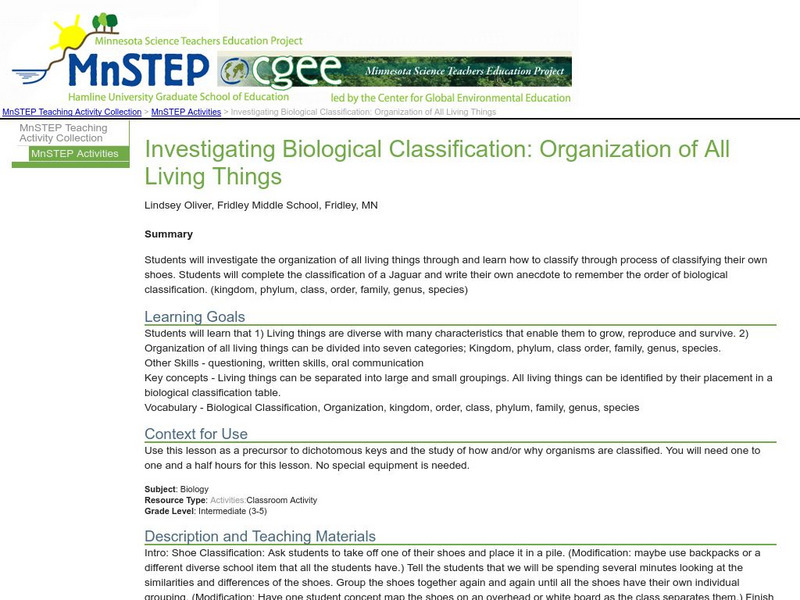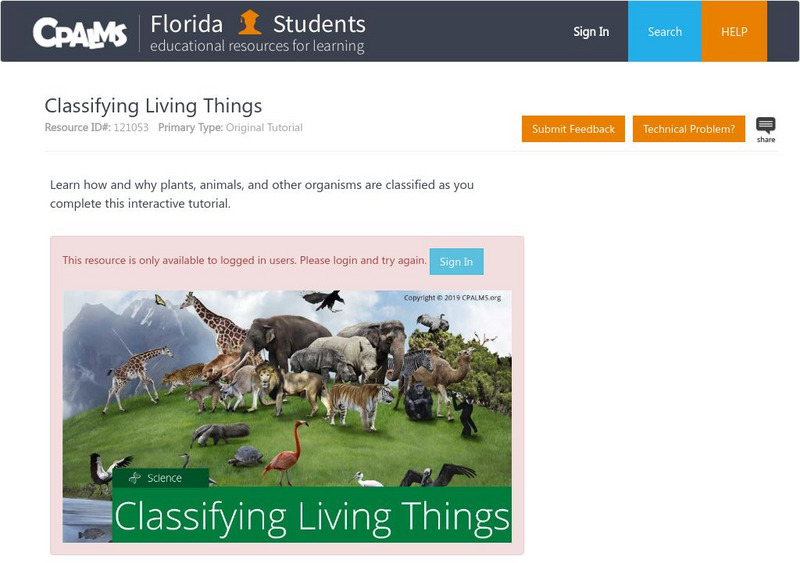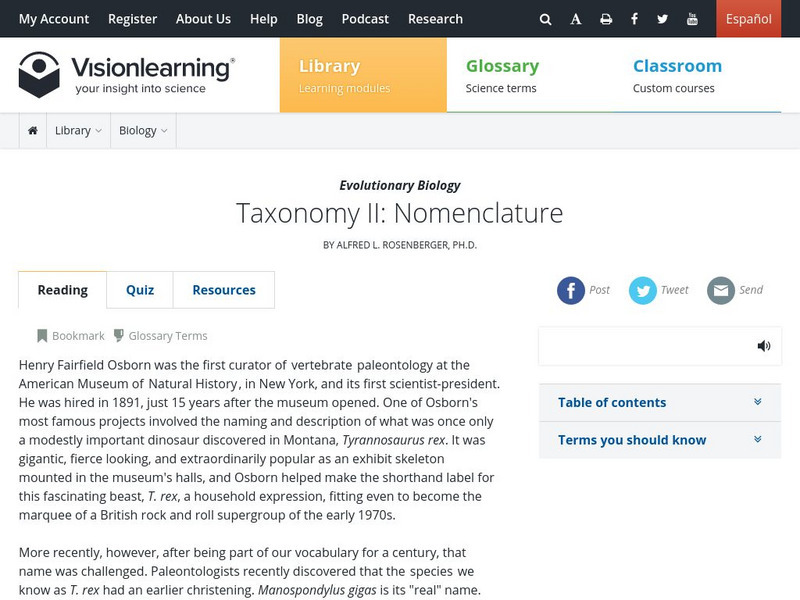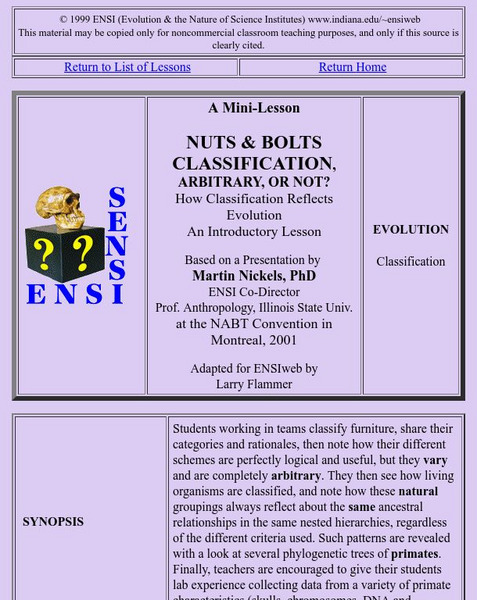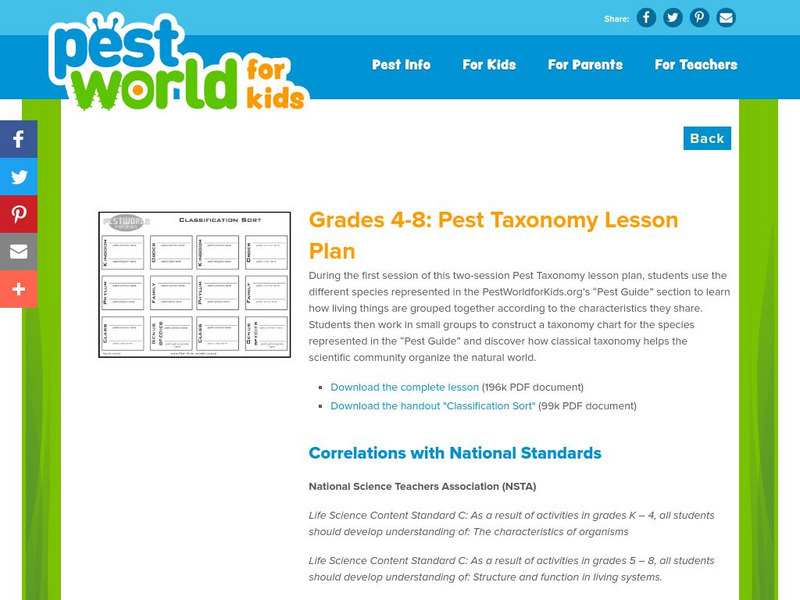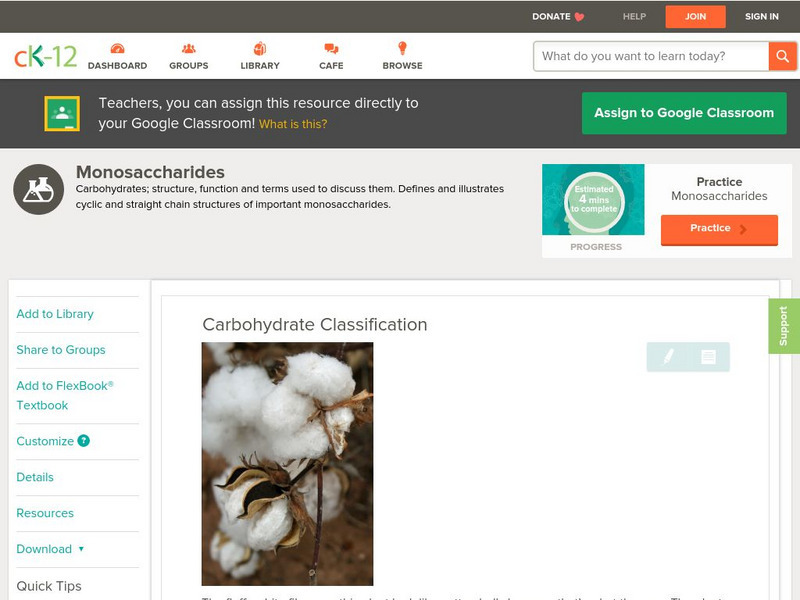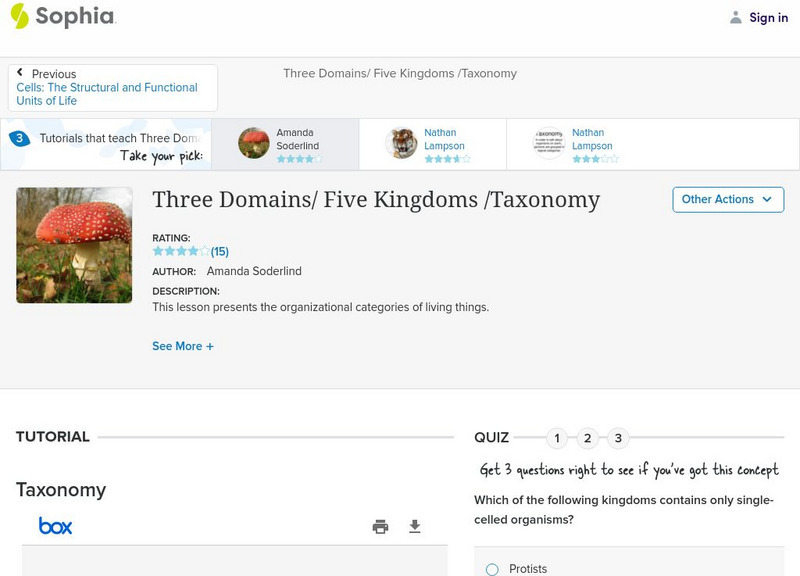Science Education Resource Center at Carleton College
Serc: Investigating Biological Classification: Organization of All Living Things
All living things can be identified by their placement in a biological classification table. Students will investigate the organization of all living things and learn how to classify through the process of classifying their own shoes....
CPALMS
Florida State University Cpalms: Florida Students: Classifying Living Things
Learn how all living things are classified.
Center for Educational Technologies
Wheeling Jesuit University: How Are Things Divided Among Earth's Four Spheres?
See if you can classify various objects in the categories of land, water, air or living thing. This activity is interactive and you will receive a score for your performance.
Vision Learning
Visionlearning: Evolutionary Biology: Taxonomy: Nomenclature
An explanation of how living organisms are named and the importance of naming them accurately.
BiologyWise
Biology Wise: The 5 Significant Kingdoms of Living Things
Describes the characteristics of the five kingdoms of living things - Monera, Protista, Fungi, Plantae, and Animalia.
Vision Learning
Visionlearning: Biology: Taxonomy Ii: Ruling Names of Giants
Instructional module focusing on binomial nomenclature. Discussion includes Carolus Linnaeus' taxonomic classification system for naming all species. Site also includes an interactive practice quiz and links relating to the topic.
Indiana University
Is Classification Arbitrary or Not?
Students transition from classifying furniture to an understanding of classification of living organisms in this thorough lesson plan site.
City University of New York
Classification: Bringing Order Out of Chaos
A self-directed module on all aspects of biological classifications that covers the species problem, diversity and chaos, cladistics, putting things in groups, and so on.
Soft Schools
Soft Schools: Classification of Organisms Quiz
Take an interactive quiz over the classification of living things. After completing the quiz, check your score, and then revisit any incorrect question for further review.
Soft Schools
Soft Schools: Classification Quiz
Take this interactive, multiple-choice quiz over classification of organisms, then review your score and any missed questions at the end.
Mocomi & Anibrain Digital Technologies
Mocomi: Kingdom Classification of Living Organisms
Learn about who created the classification of living things, how they are classified, and the six different kingdoms.
The Franklin Institute
The Franklin Institute: Living Things Families
What do centipedes and crabs have in common? What's so special about a backbone? Check this site out from The Franklin Institute if you are interested in biology and classification.
E-learning for Kids
E Learning for Kids: Science: Scotland: How Can We Group Non Living Things Based on Characteristics/purposes?
Montgomery is a true Scot, and even wears a kilt. He works in his dad's store and needs help learning about materials.
Alabama Learning Exchange
Alex: I Know What I Am, but What Are You?
During this lesson students will develop an understanding of how to classify living things and what creates the distinction among them. They will learn to classify living things by effects, environment, and activity.
McGraw Hill
Glencoe Biology: Modern Classification: Self Check Quiz
Try these five self-checking quiz questions over modern classification of living things. Click on the hints to see information about each question.
Alabama Learning Exchange
Alex: Taxonomy: The Importance of Classifying
This is a technology-based, hands-on Biology instructional activity used to introduce the topic of Taxonomy and the importance of classifying. Learners will listen to a podcast about classifying every living thing on Earth. Students will...
Estrella Mountain Community College
Online Biology Book: Biological Diversity: Classification
Explore the classification of living things in this online, college-level textbook. Learn about taxonomy and its history through diagrams and descriptive information.
McGraw Hill
Glencoe Biology: The History of Classification: Self Check Quiz
Answer these five multiple-choice questions about the history of classification of living things. After answers are submitted, students can review their mistakes.
Alabama Learning Exchange
Alex: Classification
This lesson will explain the reasons that society groups and classifies. The lesson has a hands-on component that helps students connect everyday grouping with the way that scientists group and classify all living organisms.
National Pest Managment Association
Pest World for Kids: Pest Taxonomy
During the first session of this two-session lesson, students use the different species represented in the PestWorldforKids.org's "Pest Guide" section to learn how living things are grouped together according to the characteristics they...
CK-12 Foundation
Ck 12: Physical Science: Carbohydrate Classification
[Free Registration/Login may be required to access all resource tools.] Carbohydrates: structure, function and their role in living things.
Other
Math and Science Activity Center: Classification of Living Things
Kingdom is the highest rank used in the biological taxonomy of all organisms. There are 6 kingdoms in taxonomy. Every living thing comes under one of these 6 kingdoms. The six kingdoms are Eubacteria, Archae, Protista, Fungi, Plantae,...
Sophia Learning
Sophia: Three Domains/ Five Kingdoms /Taxonomy: Lesson 1
This lesson presents the organizational categories of living things. It is 1 of 3 in the series titled "Three Domains/ Five Kingdoms /Taxonomy."
Alabama Learning Exchange
Alex: Wanted Dead or Alive!
In this lesson students will identify the characteristics of living and nonliving things.


